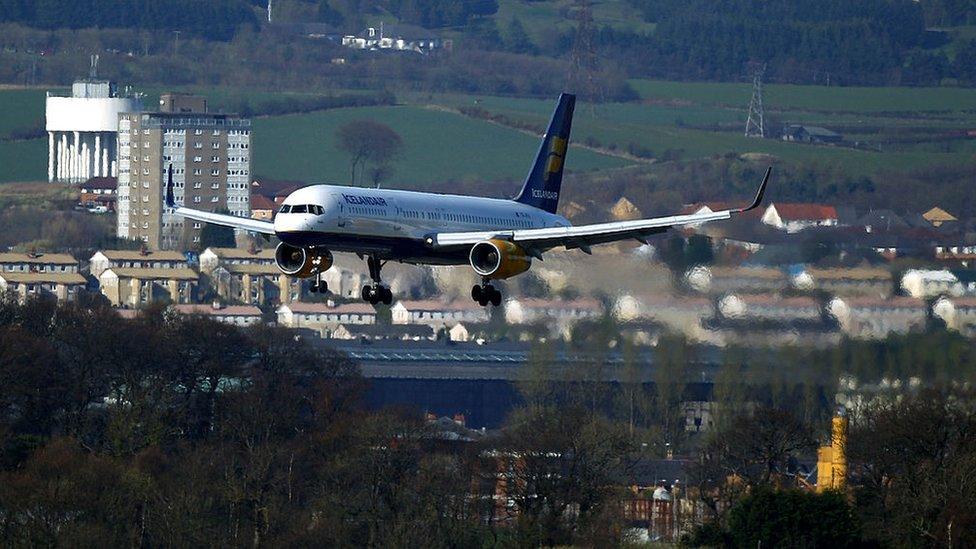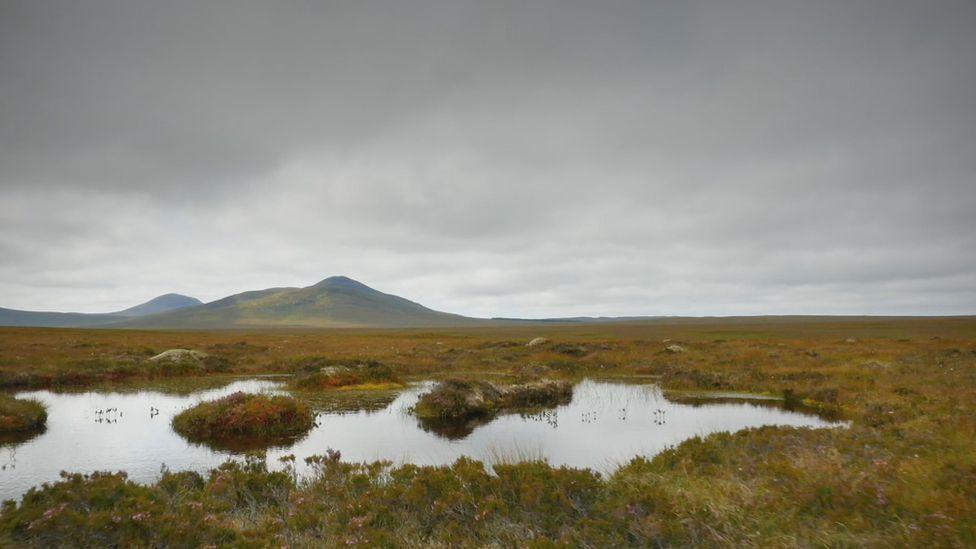Scotland's greenhouse gas emissions target missed again
- Published

Transport remains Scotland's biggest emitting sector
The Scottish government has again missed its target for reducing greenhouse gas emissions.
Figures for 2019, external show they fell 51.5% against the baseline, well short of the 55% target.
The statistics reveal Scotland's land is no longer regarded as a "carbon sink" to soak up some carbon dioxide.
Although year-on-year emissions fell, figures for all years have been revised up significantly, meaning more gases were released than previously thought.
The Scottish government has set itself a legal target to cut greenhouse gas emissions to net zero by 2045.
That is five years ahead of the date set for the UK as a whole., external
There is also an interim target to reduce emissions by 75% by 2030 which was beyond what the Climate Change Committee believed was feasible.
Greenhouse gases - like carbon dioxide and methane - accumulate in the atmosphere and are responsible for the planet warming.
In 2019, the equivalent of 47.8 million tonnes of carbon dioxide was emitted in Scotland.
Domestic transport continues to be the industry which emits the most, followed by business and then agriculture.

Emissions from international air travel saw virtually no change in emissions in 2019
Significantly more offshore wind capacity means emissions from the electricity sector fell after a blip the previous year.
Fossil fuels were used to generate just 12.7% of Scotland's power.
Most sectors saw a slight decrease in emissions, but there was virtually no change from agriculture and international aviation and shipping.
Emissions from residential properties fell slightly, driven by a warmer than usual first three months of the year.
Scotland has traditionally been able to offset some of its emissions from a carbon sink made up of trees and peatlands, both of which absorb and lock-in CO2.
But a new assessment of peatlands shows that historical draining and rewetting of these areas means Scotland's land use is actually a net-contributor to emissions.
'Half way to target'
The Scottish government accepted the latest figures were "undoubtedly disappointing".
But a spokesman said it was clear "that we have already achieved significant progress in reducing our greenhouse gas emissions".
He added: "We are now more than half way to our target of becoming a net-zero nation. This is something we can all be proud of.
"We have always been clear that the second half of our journey to net-zero will be more challenging - and it will require urgent, collective action across government, parliament and indeed across every corner of society, in order to achieve it.

Peatlands are capturing less carbon
Monica Lennon, Scottish Labour's spokeswoman for net zero, energy and transport, said the government's "rhetoric on climate emergency is not being matched by action".
She added: "It's hugely worrying that Scotland's carbon sink is shrinking, with the level of greenhouse gases soaked up by forestry and land use falling sharply since 2011.
"Empty promises and missed targets are not good enough in a climate emergency. In the year of COP26, when Scotland should be leading the world, we are instead failing on the basics."
'Degraded state'
WWF Scotland said the figures showed "some positive progress" but that it was clear Scotland needed to do more on climate change.
The organisation's head of policy, Fabrice Leveque, said: "It's critical that transformative action is taken, especially in agriculture where emissions are flatlining.
"Peatlands have the potential to lock away huge amounts of carbon but, due to their degraded state, they're releasing this back to the atmosphere.
"Increased effort in these areas could revitalise rural economies and restore our precious nature, helping to ensure a fair and green recovery from the Covid pandemic."